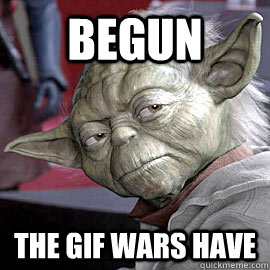7 Effective Strategies for Collaboration with Microsoft Teams

There's an ever-growing number of real-time chat tools to enable collaboration. But have you ever wondered why? Why is collaboration important? How does collaboration add value to your work and productivity?
The answer is surprisingly simple: Collaboration makes you better. No matter what definition you use, no matter what business journal you reference, the intention behind collaboration is to improve your work.
But there's an ugly, not-so-secret side to collaboration: It can slow you down. A lot. All too often, there's a lot of useless chatter that can bog down your interactions with colleagues and coworkers as you attempt to collaborate.
Here are seven strategies to help you avoid unproductive chatter and get to the good stuff of collaboration.
1. Begin with the End in Mind
Whatever it is that you're working on, there is (or there should be!) a predetermined goal or outcome that you're working toward. Keep your goal in mind as you begin any kind of collaboration. If you can develop a habit of keeping the end in mind at the outset of every chat, email, video call, or meeting, you will be better able to stay focused in your interactions.
2. Maintain Tool or Channel Purity
Microsoft Teams, like most real-time collaboration tools, offers channels to help focus the discussion. But it's almost inevitable that someone will add a comment, link, or GIF that will derail the meaningful discussion. Gently bring the discussion back around to the intended topic to help keep the channel clean and purposeful.
3. Create Collaboration Boundaries (even if just for yourself)
Real-time collaboration tools like Microsoft Teams, Slack, Google Hangouts, HipChat, and many others give you unprecedented access to everyone on your team. Which is amazing, until it's not. There must be space for you to actually do your job and produce. Create boundaries for how much or how often you engage with collaboration tools that will facilitate your productivity. Make sure your team knows your boundaries so they can respect those boundaries and maybe even emulate those boundaries to ensure their own productivity.
4. Ask One Question, Expect One Answer
Complex, compound questions are challenging, especially when asked over team-wide collaboration tools. Be intentional about asking one question at a time, and allowing your team to respond appropriately. Try to avoid compound question madness like this (let's count 'em down):
"Hey guys, where can I find the presentation file [that's one] for that client we worked with in September (anyone remember their name [that's two]?)? I need the chart we made for that presentation, so maybe just the chart, or maybe even just the data that we used for the chart. Does anyone know where that data lives [that's three]? Or the chart [that's four]?"
Four. There are four questions there. That's terrifying. No one wants to wade through all that.
Practice honing your communication so that you can ask a single, well thought-out question. Avoid stream-of-consciousness typing in your real-time collaboration tools. Your team members will appreciate it!
5. Don't Be Distracted or Distracting
There's always a temptation to be distracted by the hilarious GIF that your colleague posted in your collaboration channel. And it may be totally appropriate to do so, but it's a slippery slope, my friend. Before you know it, you have a GIF war happening in a channel that is supposed to be dedicated to Q3 strategic planning.

(Oops. See how tempting it is? We all fall victim to the temptation from time to time)
That's a problem.
Rather than being part of the problem, be part of the solution. Create a channel where everyone in the organization can post GIFs to their heart's content, while the rest of the grownups get some work done.
6. Avoid Information Overload
There's a good reason why the collaboration software you use includes a chat function. Chats are brief. They're best for rapid-fire questions, answers, or statements. Avoid information overload in chat channels by reserving dense content, data, or information for more appropriate channels like email, meetings, or video calls.
There are some handy guidelines to help you determine which tools are best for your purposes. Remember: The attention span of the average adult is down to about eight seconds, which is less than that of a goldfish. Plan accordingly for your collaboration with colleagues.
7. Accommodate All Work Styles
Different people have different ways of working. Some of your colleagues will constantly monitor your collaboration software, responding to requests immediately. Others will only respond as they have time and capacity to do so. And others may avoid the collaboration software altogether. Be prepared to accommodate all work styles and honor the way that people work best. Create some ground rules or minimum expectations for the team to ensure that collaboration continues to be productive.
This only scratches the surface of the best practices for using collaboration tools. But you can help ensure your own productivity and efficiency (and maybe that of your entire team too) with these strategies for the collaboration win!
Learn more about how to effectively use Microsoft Teams with Simona Millham's new course.
delivered to your inbox.
By submitting this form you agree to receive marketing emails from CBT Nuggets and that you have read, understood and are able to consent to our privacy policy.